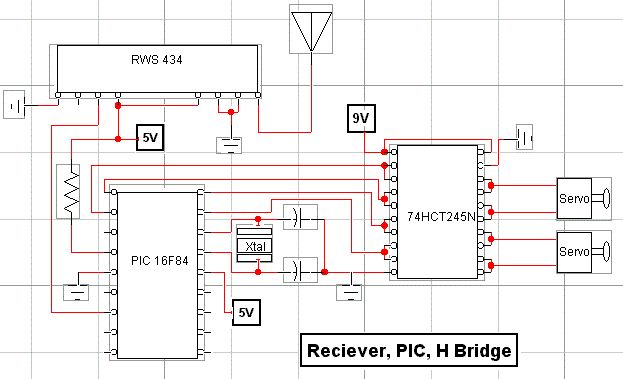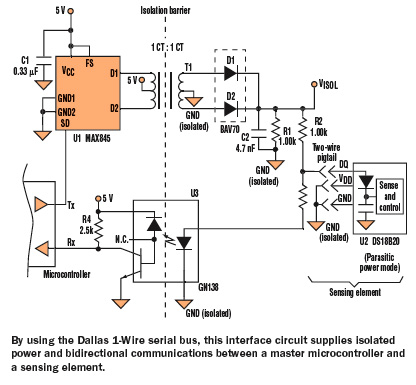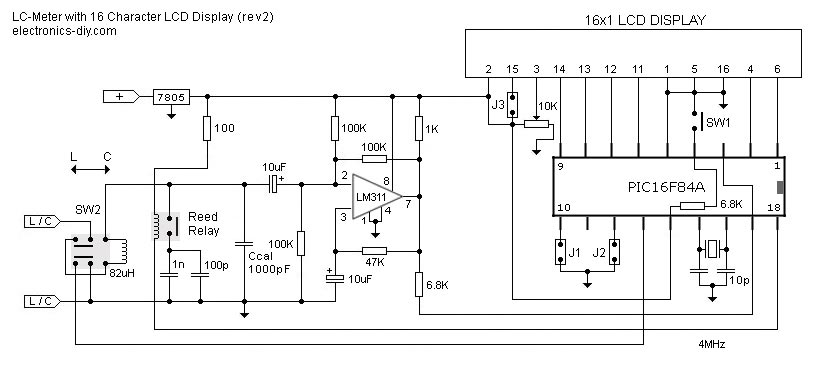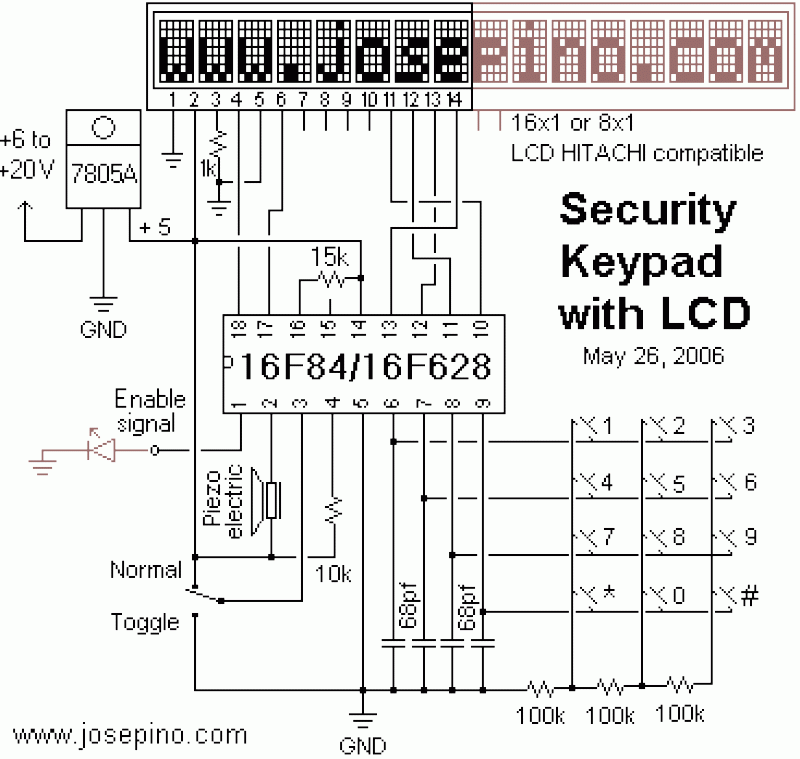
Isolated RS232C for PIC16F84
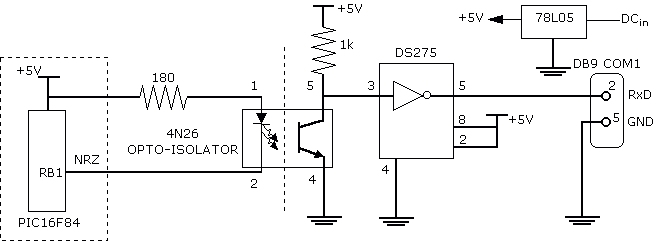
Another method that helps program development besides a dot LED as the output device is a serial bit. With a serial transmission to a terminal emulator program, developer may then test program running easier than a dot LED. One of my circuit uses PIC16F84 having one bit for sending ascii character with "printf" function. The PIC16F84 provides a very convenient way of connecting serial data to terminal. We may use a 1K resistor connects RB1, say to RxD pin of COM1 directly. As shown above diagram, my PIC circuit uses a transformerless DC supply. Direct connection is then not recommended for safety. The ground voltage difference between two circuits may destroy the RS232 converter chips.
The described circuit utilizes a PIC16F84 microcontroller to facilitate serial communication, allowing for effective program testing through a terminal emulator. The microcontroller is configured to transmit ASCII characters using the "printf" function, which simplifies the process of debugging and monitoring program execution.
In this setup, the RB1 pin of the PIC16F84 is used to send data. A 1K ohm resistor is employed to connect this pin to the RxD pin of a COM1 port, ensuring that the signal levels are compatible and reducing the risk of damage to the microcontroller or the receiving device. It is important to note that direct connections without proper interfacing can lead to issues due to potential differences in ground voltage between the PIC circuit and the terminal device, which may harm RS232 converter chips.
For power supply, a transformerless DC supply is utilized, which is a common choice for low-power applications. However, caution is advised when using transformerless designs, as they can expose the circuit to high voltages and may not provide adequate isolation. It is recommended to incorporate additional protective components, such as opto-isolators or voltage level shifters, to mitigate risks associated with voltage differences and ensure safe operation.
Overall, this circuit design exemplifies a straightforward method for integrating serial communication capabilities into microcontroller applications, enhancing the development and testing process while highlighting the importance of safety and proper interfacing in electronic designs.Another method that helps program development besides a dot LED as the output device is a serial bit. With a serial transmission to a terminal emulator program, developer may then test program running easier than a dot LED.
One of my circuit uses PIC16F84 having one bit for sending ascii character with "printf" function. The PIC16F84 provides a very convenient way of connecting serial data to terminal. We may use a 1K resistor connects RB1, say to RxD pin of COM1 directly. As shown above diagram, my PIC circuit uses a transformerless DC supply. Direct connection is then not recommended for safety. The ground voltage difference between two circuits may destroy the RS232 converter chips. 🔗 External reference
The described circuit utilizes a PIC16F84 microcontroller to facilitate serial communication, allowing for effective program testing through a terminal emulator. The microcontroller is configured to transmit ASCII characters using the "printf" function, which simplifies the process of debugging and monitoring program execution.
In this setup, the RB1 pin of the PIC16F84 is used to send data. A 1K ohm resistor is employed to connect this pin to the RxD pin of a COM1 port, ensuring that the signal levels are compatible and reducing the risk of damage to the microcontroller or the receiving device. It is important to note that direct connections without proper interfacing can lead to issues due to potential differences in ground voltage between the PIC circuit and the terminal device, which may harm RS232 converter chips.
For power supply, a transformerless DC supply is utilized, which is a common choice for low-power applications. However, caution is advised when using transformerless designs, as they can expose the circuit to high voltages and may not provide adequate isolation. It is recommended to incorporate additional protective components, such as opto-isolators or voltage level shifters, to mitigate risks associated with voltage differences and ensure safe operation.
Overall, this circuit design exemplifies a straightforward method for integrating serial communication capabilities into microcontroller applications, enhancing the development and testing process while highlighting the importance of safety and proper interfacing in electronic designs.Another method that helps program development besides a dot LED as the output device is a serial bit. With a serial transmission to a terminal emulator program, developer may then test program running easier than a dot LED.
One of my circuit uses PIC16F84 having one bit for sending ascii character with "printf" function. The PIC16F84 provides a very convenient way of connecting serial data to terminal. We may use a 1K resistor connects RB1, say to RxD pin of COM1 directly. As shown above diagram, my PIC circuit uses a transformerless DC supply. Direct connection is then not recommended for safety. The ground voltage difference between two circuits may destroy the RS232 converter chips. 🔗 External reference

